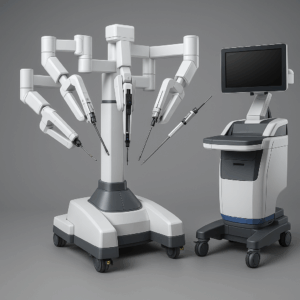At Boston Hernia, we treat a lot of patients with bilateral inguinal hernias—that’s a hernia on both sides of the groin. And if you’ve ever Googled “best way to fix bilateral hernias,” you’ve probably seen the same advice repeated over and over:
“You should have laparoscopic or robotic surgery.”
That’s what international guidelines say. But here’s the problem: those guidelines were based on one small, non-randomized study1
. Not exactly the gold standard. And now, new data is challenging that idea in a big way.
A recent paper from the ACHQC registry, one of the largest hernia databases in the country, looked at over 1,900 patients who had both sides repaired, some with laparoscopy or robotics, and others with an open technique. After adjusting for all the usual risk factors (age, health, surgical history), we found something shocking:
There was no difference in outcomes.
No difference in recurrence.
No difference in post-op pain.
No difference in complications.
No difference in long-term quality of life.
Let me say that again: patients who had traditional open hernia repair did just as well as those who had robotic or laparoscopic surgery2
So why are we still pushing everyone toward robotic surgery?

Robotic Hernia Surgery shows no benefit compared to open hernia surgery, even for bilateral inguinal hernia
Here’s the part that really matters: about 40% of the patients in the open group had what’s called an open preperitoneal repair. That’s the technique we specialize in at Boston Hernia. It’s a modern open repair that works from behind the abdominal wall, just like laparoscopy, but without the need for general anesthesia or fancy robotic equipment.
And guess what? That group did great.
In fact, outcomes for those open preperitoneal repairs were so good, they may have pulled the entire open group up. That’s how effective this approach can be—when done well, by a team that does it often.
We’ve been saying it for years: robotic surgery is not always necessary. In fact, some surgeons recommend it simply because it’s what they’re used to, or because it’s encouraged by their partners in the robotics industry, not because it’s actually the best choice for you. And now, the data backs this up.
What This Means for You
If your surgeon tells you, “You need robotic surgery because your hernia is on both sides,” ask them this:
“What about an open preperitoneal repair?”
You might get a blank stare. That’s okay. Most surgeons haven’t been trained in it. It’s not common. But at Boston Hernia, it’s what we do every day.
Robotic surgery has its place in inguinal hernia repair – for really complex repairs and patients who are morbidly obese. But for most patients, especially those who want to avoid general anesthesia or are looking for a faster, safer recovery, open preperitoneal repair is often the better choice.
Bottom Line
You don’t need a robot just because you have a bilateral hernia. What you need is a surgeon with experience in all the options, so you can choose the one that’s actually best for you. At Boston Hernia, we specialize in several options for inguinal hernia repair and work with our patients to figure out which option best suits their individual needs. We offer no mesh, anterior mesh, laparoscopic and of course, the open pre-peritoneal approach.
If you’re dealing with a hernia on both sides and want an honest opinion about your options, reach out. We’ll talk you through it, minus the bias and industry script.
- Feliu X, Clavería R, Besora P, Camps J, Fernández-Sallent E, Viñas X, Abad JM. Bilateral inguinal hernia repair: laparoscopic or open approach? Hernia. 2011 Feb;15(1):15-8. doi: 10.1007/s10029-010-0736-2. Epub 2010 Oct 21. PMID: 20960019.
- Agarwal D, Bharani T, Fullington N, Ott L, Hodgson K, McClain D, Blake KE, Reinhorn M. Comparison of open and laparo-endoscopic repair techniques for patients with bilateral inguinal hernias. Hernia. 2025 Jun 3;29(1):194. doi: 10.1007/s10029-025-03385-w. PMID: 40459773.
